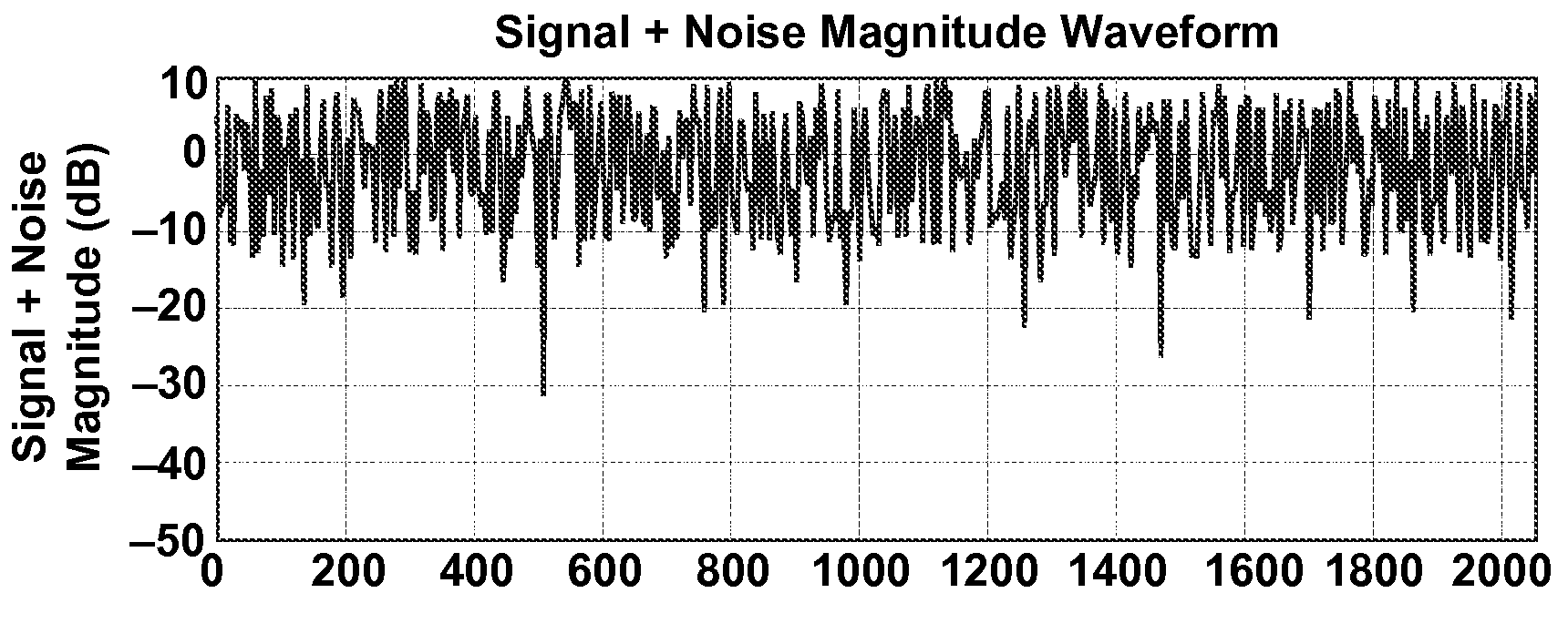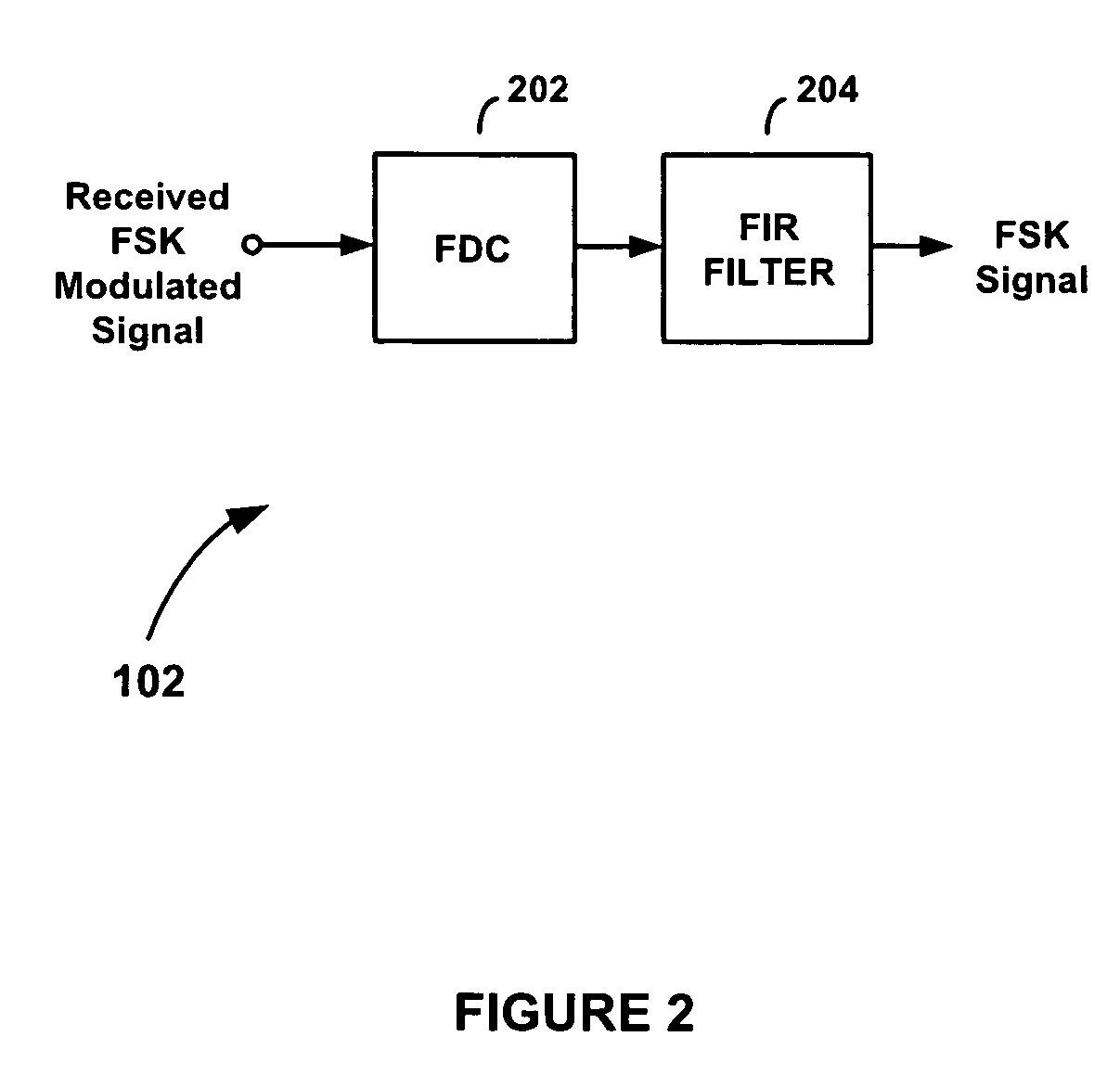Frequency Demodulation with Threshold Extension
a frequency demodulator and threshold extension technology, applied in the direction of restoring means or bias distort correction, line-fault/interference reduction, baseband system details, etc., can solve the problems of difficult integration of components using standard ic fabrication processes, difficult to manufacture conventional fsk demodulators in integrated circuit (ic) form, and difficult to remove click-induced noise enhancements, etc.
- Summary
- Abstract
- Description
- Claims
- Application Information
AI Technical Summary
Benefits of technology
Problems solved by technology
Method used
Image
Examples
Embodiment Construction
[0019]Referring to FIG. 1, there is shown an FSK demodulator 100, according to an embodiment of the present invention. The FSK demodulator 100 comprises a frequency discriminator 102, an integrator 104, a digitizer 106, a click reduction signal processing (CRSP) circuit 108, and a differentiator 110.
[0020]The frequency discriminator 102 is operable to sample a received FSK modulated signal and produce an FSK modulation signal having levels corresponding to the different FSK modulation states. The FSK modulation signal is integrated by the integrator 104 to generate a phase shift keying (PSK) modulation signal having phase modulation states corresponding to the different FSK modulation states. As will be explained in more detail below, performing this initial phase demodulation process, allows the CRSP circuit 108 to more easily detect and remove noise enhancements caused by clicks. Once the noise enhancements have been removed by the CRSP circuit 108, the “cleaned” phase modulation ...
PUM
 Login to View More
Login to View More Abstract
Description
Claims
Application Information
 Login to View More
Login to View More - R&D
- Intellectual Property
- Life Sciences
- Materials
- Tech Scout
- Unparalleled Data Quality
- Higher Quality Content
- 60% Fewer Hallucinations
Browse by: Latest US Patents, China's latest patents, Technical Efficacy Thesaurus, Application Domain, Technology Topic, Popular Technical Reports.
© 2025 PatSnap. All rights reserved.Legal|Privacy policy|Modern Slavery Act Transparency Statement|Sitemap|About US| Contact US: help@patsnap.com



